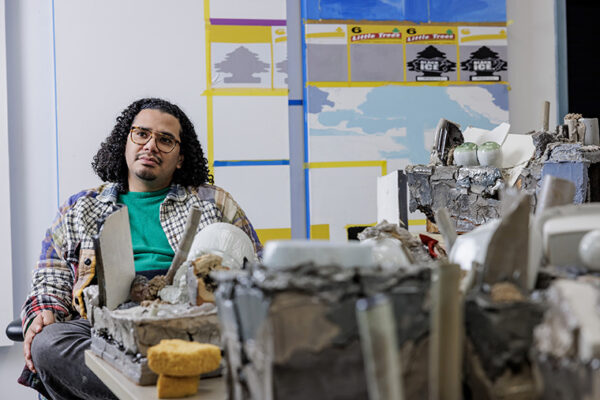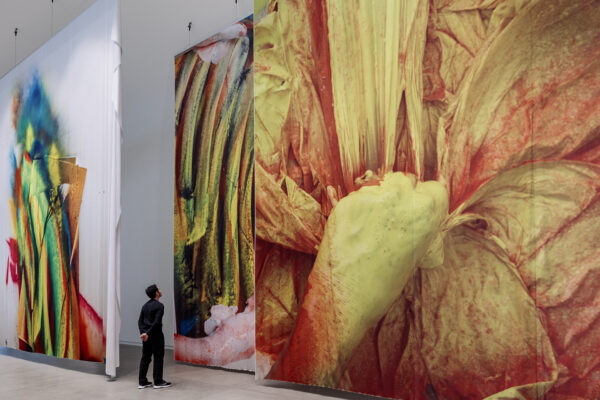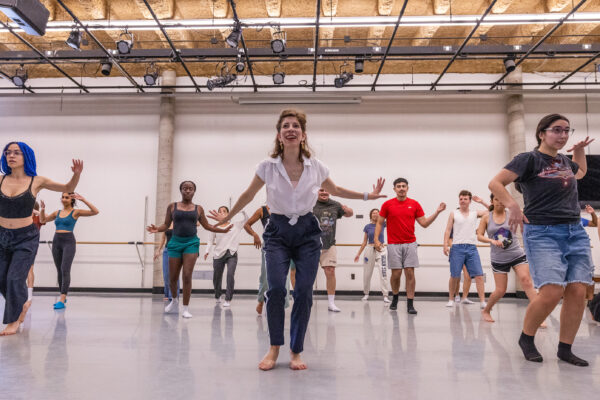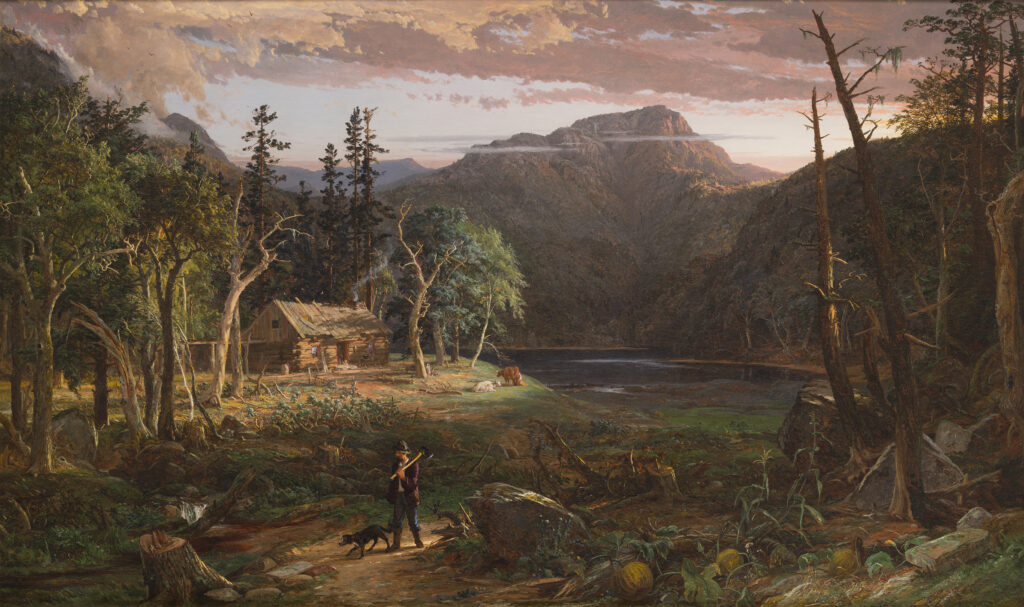
In 19th-century painting, the American landscape is often represented as lush, rugged, breathtaking and, conveniently for settlers, virtually unpopulated. But clues of Native inhabitancy and subsequent displacement abound. In “The Backwoods of America” (1858), Jasper Francis Cropsey depicts a rough-hewn cabin amidst tangled woods, epic skies and imperious New Hampshire mountains. A closer look reveals beds of corn and pumpkin — Indigenous crops long cultivated by the Abenaki Nation.
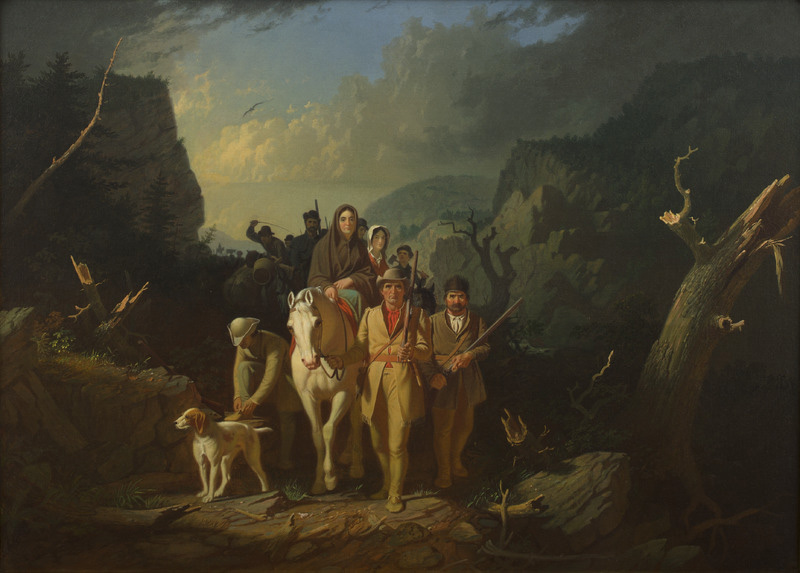
In “Reframing the 19th Century,” the Mildred Lane Kemper Art Museum at Washington University in St. Louis places highlights from its permanent collection alongside six canvases on long-term loan from the Crystal Bridges Museum of American Art in Bentonville, Ark. These include a painting by Edward Mitchell Bannister, a Canadian-born Black artist who was a founding board member of the Rhode Island School of Design and whose life is contextualized with additional archival materials.
The aim, said Dana Ostrander, the museum’s assistant curator, “is to present more inclusive narratives that broaden our understanding of 19th-century art. Together, the works on view enable us to consider more diverse themes and to foreground understudied histories of race and Indigeneity in the Americas.”
On view in the museum’s Gertrude Bernoudy Gallery, the installation consists of two parts. “Native and Settler Histories in 19th-Century American Art” begins with George Caleb Bingham’s “Daniel Boone Escorting Settlers through the Cumberland Gap” (1851–52), which deploys religious iconography to suggest divine sanction for westward expansion. Works by Thomas Cole, Charles Bird King and Charles Ferdinand Wimar visualize the forced displacement of Native peoples, with varying degrees of fiction and historical accuracy.
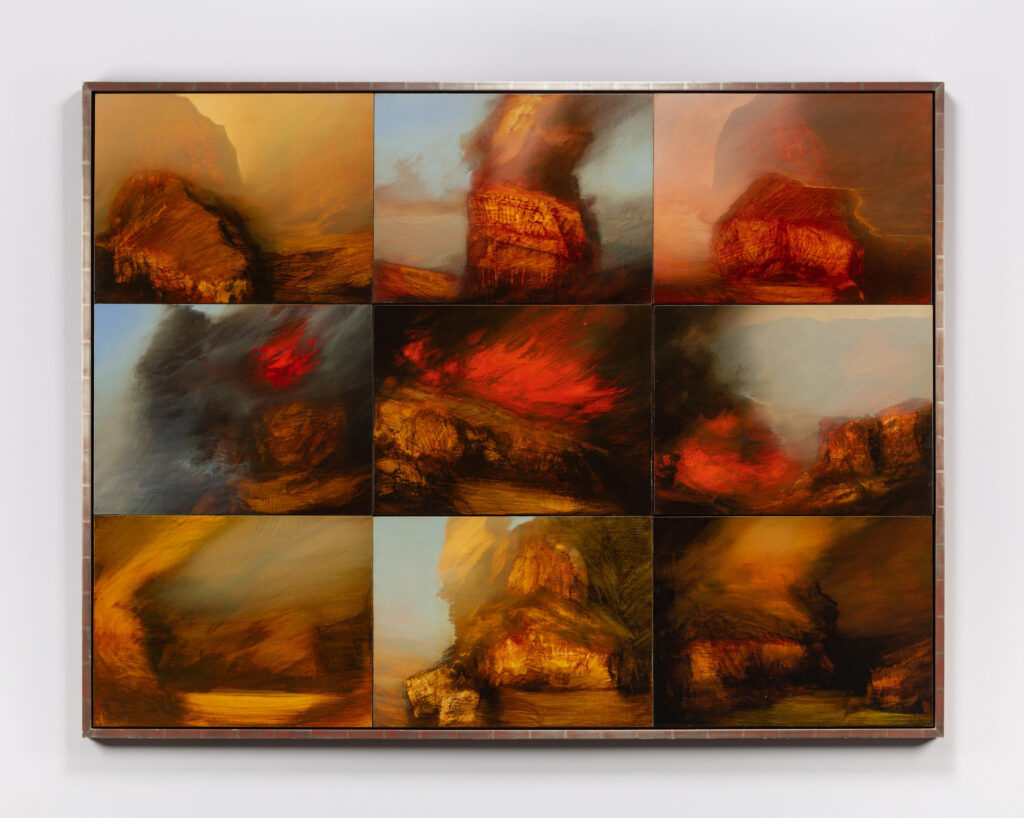
Standing in ideological counterpoint is “Like Rain” (1995), an eruptive nine-panel landscape painting by contemporary artist James Lavadour, an enrolled member of the Confederated Tribes of the Umatilla Indian Reservation. On loan from the John and Susan Horseman Collection, “Like Rain” challenges Euro-American understandings of land usage and ownership while also exploring how creative and destructive natural forces — such as fire, rain, and wind — can be channeled through the act of painting.
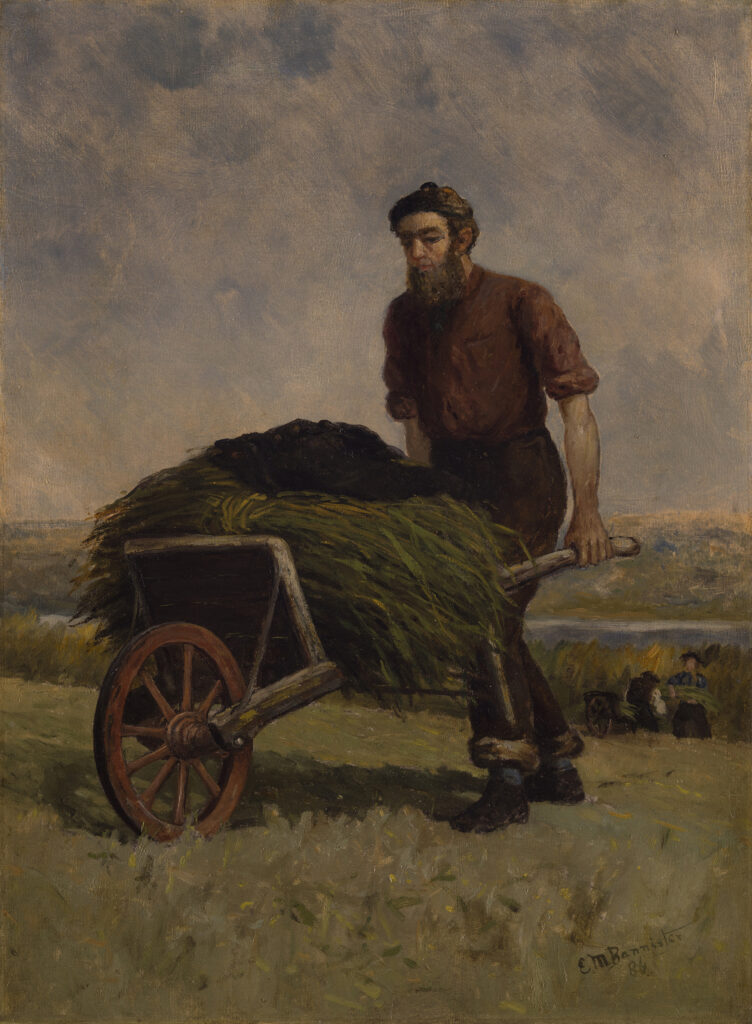
The second part, “French Barbizon Influence in the United States,” highlights the transnational impact of French artists like Jean-Baptiste-Camille Corot, Narcisse Virgile Diaz de la Peña and Jules Dupré. As members of the Barbizon school, they created poetic landscapes painted en plein air (in the open air). For French artists, direct engagement with nature represented escape from both classical tradition and rapid industrialization. In New England, Barbizon-influenced artists like Winslow Homer, George Inness and Eastman Johnson, working in the wake of the Civil War (1861-1865), frequently valorized small northern farms in distinction to the exploitive southern plantation model.
The gallery’s largest display is dedicated to Bannister, who forged a successful career as a landscape painter, and advocated for abolitionist causes, in 19th-century Boston and Providence, R.I. “Harvest” (1884) — a work Bannister likely made with the New England art market in mind — depicts a heroic white northern farmer guiding a wheelbarrow filled with salt marsh hay. The installation also includes a digitized scrapbook of Bannister’s drawings from the Smithsonian Institution’s Archives of American Art and facsimile documents relating to his life. These include examples of Bannister’s photography; his first-prize certificate from the 1876 Philadelphia Centennial Exposition; and a newspaper profile in which he recalls how exposition officials, upon learning his race, sought to “reconsider” the award.
Visitor information
“Reframing the 19th Century” is currently on view in the Kemper Art Museum’s Bernoudy Gallery, Rooms 1 and 2. The museum is located on WashU’s Danforth Campus, near the intersection of Skinker and Lindell boulevards. Visitor parking is available in the university’s east end garage.
Regular hours are 11 a.m. to 5 p.m. Mondays and Wednesdays through Sundays. The museum is closed Tuesdays. For more information, call 314-935-4523 or visit kemperartmuseum.wustl.edu. Follow the museum on Facebook, Instagram and YouTube.
Support
“Reframing the 19th Century” is curated by Dana Ostrander, assistant curator at the Kemper Art Museum, with Hannah Wier, a doctoral candidate in WashU’s Department of Art History & Archaeology in Arts & Sciences, as part of the Mentored Professional Experiences program.
Lenders for the installation include the Crystal Bridges Museum of American Art, as part of Art Bridges’ Partner Loan Network; the John and Susan Horseman Collection; and the Julian Edison Department of Special Collections, Washington University Libraries.
